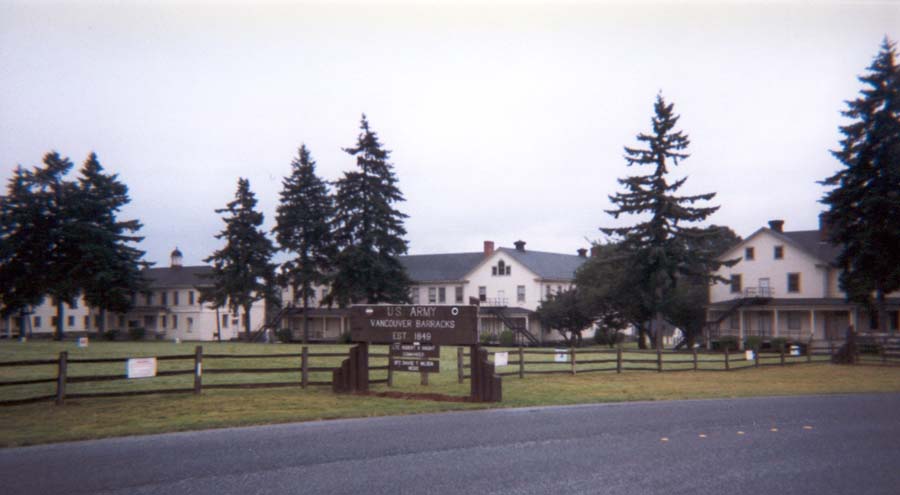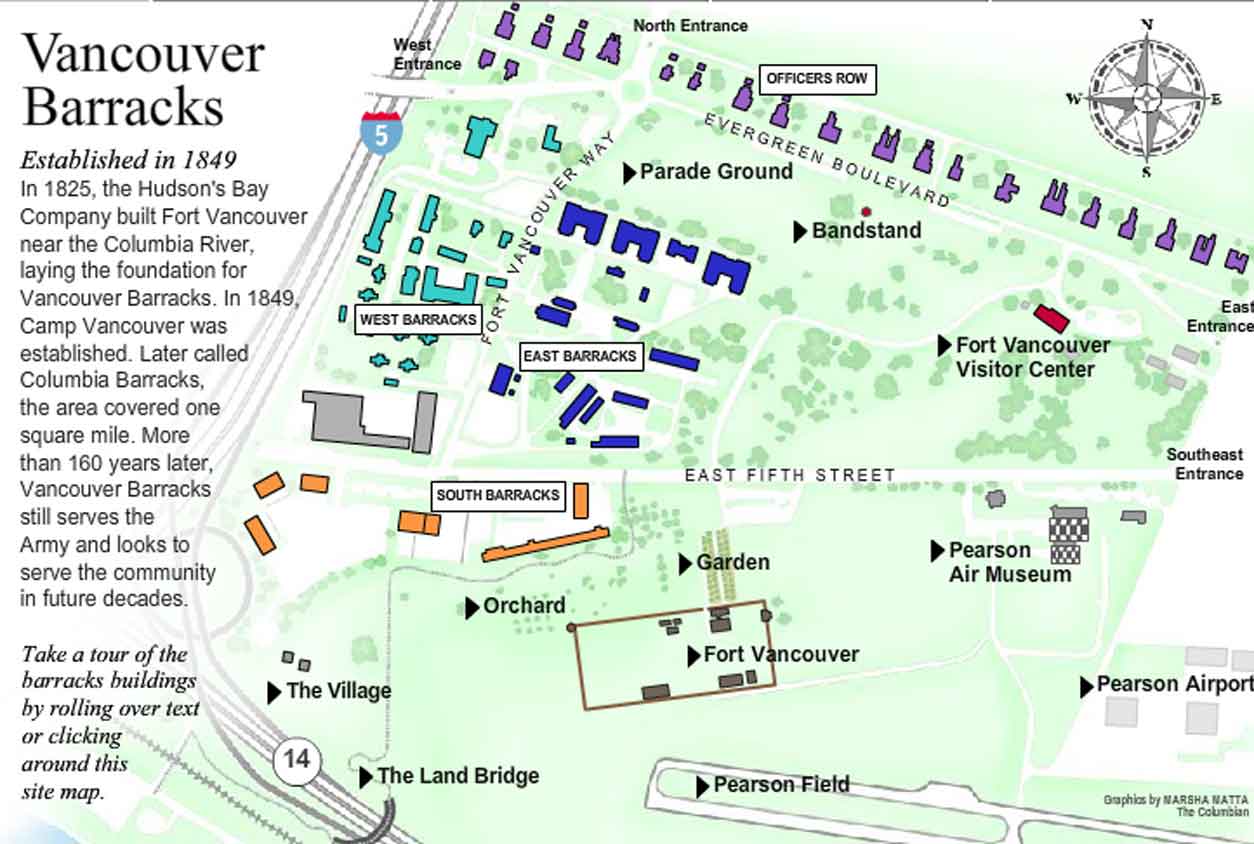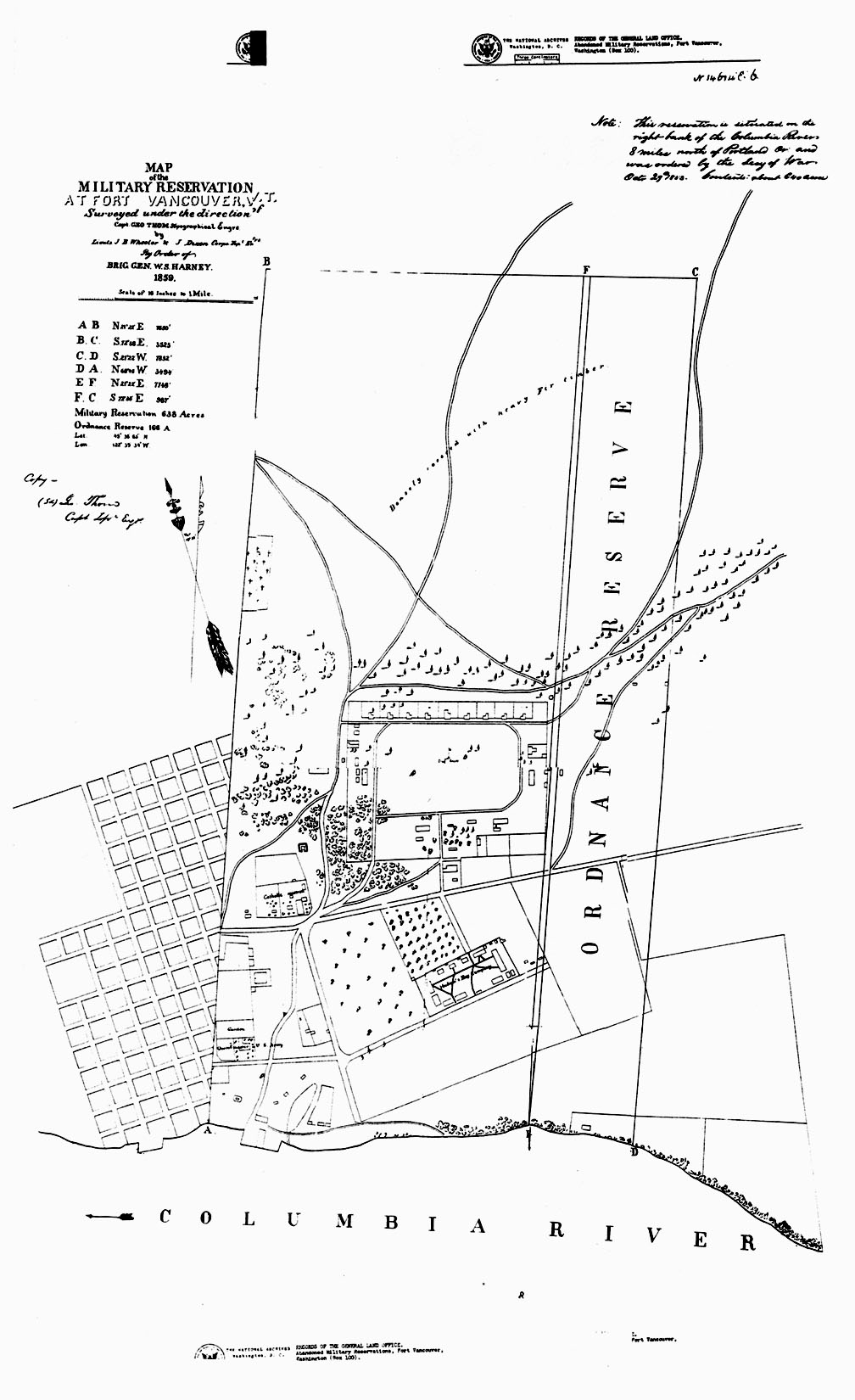Projects - Museum

The Vancouver Barracks Military Association formed between late 2010 and early 2011, with plans to open a military history museum in or near the Vancouver Barracks.
The United States Army and other military forces were stationed at the Vancouver Barracks for over 160 years and worked for the interests of the United States government and citizens. Of course, since the forces at the Vancouver Barracks were the military arm of the United States government and sometimes kept order by force, this was not always a pretty picture.
Jefferson Davis
President VBMA
Many people believe that the Vancouver Barracks they know today, is the same size it has always been. In the past, it was much larger. There are two illustrations below. One is modern map of the Barracks. Below that is another map from the late 1800s, showing it was twice as large, from the Columbia River to Fourth Plain Boulevard. This includes land now owned by the National Park Service, the City of Vancouver, the Vancouver School District, Clark College and other entities. No one group has a unified plan to tell the entire story of the Vancouver Barracks. We hope to assist all owners to do so.

Today, many people think that the Vancouver Barracks has only taken up the
land
from the Columbia River, north to Officer's Row. This is
wrong.

For about a century, the Vancouver Barracks was a half mile wide and nearly two miles long. It began at the Columbia River, with the east and west lines forming East and West Reserve Streets. These streets ran about two miles north, to (more or less) modern day 4th Plain Road. For most of this time, the land was used for training and around 1890, the army built a reservoir system on the high ground in what is now Water Works Park.
In World War II, the Army built Camp Hathaway in this northern area. Its buildings stood on the present day site of Clark College, in Vancouver, WA. Camp Hathaway served many functions for the U. S Army in World War II. It was the home of the Army Quartermaster Corps Schools, established by Lieutenant General Edmund Gregory, the Quartermaster General of the United States Army. For example, one company of the 308th Quartermaster Fumigation and Bath Battalion, which trained at the Vancouver Barracks, could Body Sterilize (de-louse) to up to 30,000 troops using DDT in 12 hours. They could also sterilize enough fresh water to provide for laundry and clean uniforms and finally, set up showers to finish the hygiene process.
The Quartermaster Corps was also responsible for the incarceration of all Prisoners of War taken by United States forces. Camp Hathaway housed both Italian and German POWs in several locations. After Pearl Harbor, the Barracks became a staging area for the Portland Subport of embarkation. Many soldiers processed through the Vancouver Barracks on their way to the Pacific Theater. Some returned to the Barracks, as patients at the Barnes Army Hospital, adjacent to Camp Hathaway.
World War II began in Europe and Asia in the 1930s. Although the United States was officially neutral until December 7, 1941, the War Department knew that America would eventually enter the war. In 1940 and 1941, military planners took on the task of finding land for new training bases as well as increasing facilities at existing military posts. This included drawing up plans for all of the buildings and structures necessary for these bases. This included houses of worship like the Camp Hathaway Chapel.







